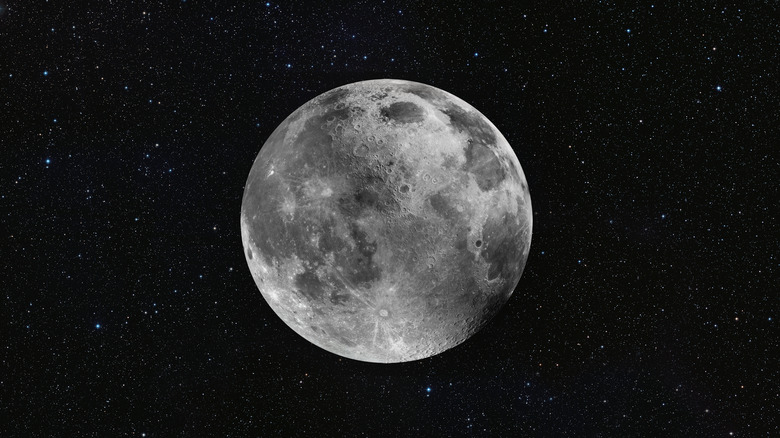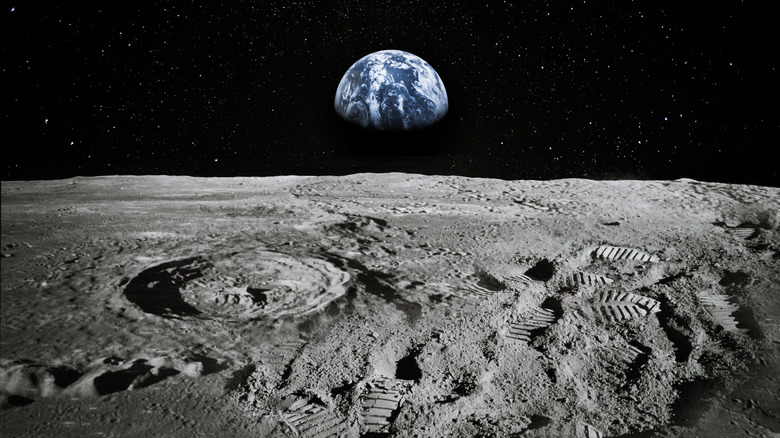The Moon Is Actually Shaped Like A Lemon. Here's Why
As our closest celestial neighbor, the moon sure does get a lot of attention. Earth, like a nosey gossiper staring out of a window, loves to blab. So let's clear up some misinformation, unfounded speculation, and nonsensical moon beliefs straightaway: The Apollo 11 mission landed on it in 1969, and folks walked on it; there's no alien base on the dark side; it's not hollow because that's impossible; there's no man in the moon; no cows jump over it, hey diddle diddle; it's not made of cheese (it's coated in craters). Does that cover it? Oh, and it's not a perfect sphere. But then again, neither is Earth.
Earth and its moon both have bulges around the equators. Strictly speaking, they're not spheres, but "oblate spheroids," as Earth How explains. They're a bit squashed, like an ultra fluffy pancake, a spinning water balloon, or a fallen lemon. Not a lot, mind you. Earth's pole-to-pole (meridional) circumference is 24,860 miles (40,008 km), and its equatorial circumference is 24,901 miles (40,075 km) (via Space). Unlike people, though, these love handles have nothing to do with increasing age and a growing dependence on delivery food.
Earth's love handles, aka "tidal bulges," come from centrifugal force, inertia, and the looseness of its crust's tectonic plates (overviewed on the National Ocean Service). Also, there's the gravitational tug of the moon. That's a clue about why the moon, too, fights the battle of the bulge.
Massive, chilled-out magma oceans
It took all the way to 2014 for researchers to be certain about why the moon bulges along its equator, like Earth. After all, Earth has a part-liquid, smooshy-gooey interior of molten metals and irritable gases. The moon is similarly made of rock and metal, but is a whole lot cooler. Its outermost layer is composed of "regolith," a bedsheet of loose dust, rocky material, and sandy scree about 10 feet (3 meters) deep, as Space explains. The moon's crust is about 38-63 miles (60-100 kilometers) thick. Underneath that, its 839-mile (1,350-km) mantle descends to a dense, iron-and-nickel core, as NASA describes.
All this begs the question: How could solid stone "bulge" along its belly? Well, the moon wasn't always solid. Its now-serene face belies its violent past, when the entire thing was coated in an ocean of magma for about 200 million years, as Space explains again. It eventually chilled out, literally, and more or less froze in place as it rotated. We know this because its crust is composed of minerals that spun to its surface and crystallized in place, such as the exotically named "anorthositic plagioclase feldspar." Denser, heavier mantle minerals sunk deeper.
As The New York Times outlines, the moon's paunch comes from this cooling period. It's basically a permanent tidal bulge frozen into shape as the whole moon cooled. To our Earth-bound eyes, the moon might as well be a perfect sphere. It does, though, have a tiny gut.

